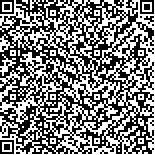范杰诚,王佳良,夏春凤,等.呼吸功能训练对帕金森病患者运动和呼吸功能及日常生活活动能力的影响[J].中华物理医学与康复杂志,2021,43(8):693-697
扫码阅读全文

|
| 呼吸功能训练对帕金森病患者运动和呼吸功能及日常生活活动能力的影响 |
|
| |
| DOI:10.3760/cma.j.issn.0254-1424.2021.08.005 |
| 中文关键词: 帕金森病 呼吸功能训练 运动 平衡 步行 日常生活活动能力 |
| 英文关键词: Parkinson′s disease Breathing exercises Motor functioning Balance Walking Activities of daily living |
| 基金项目:潍坊市卫健委科研项目(wfwsjk_2019_155) |
|
| 摘要点击次数: 4782 |
| 全文下载次数: 6964 |
| 中文摘要: |
| 目的 探讨呼吸功能训练对帕金森病患者运动、平衡、步行、呼吸功能及日常生活活动(ADL)能力的影响。 方法 将符合纳入标准的原发性帕金森病患者60例采用随机数字表法分为对照组和治疗组,每组30例,2组患者均给予常规药物治疗和康复训练,包括核心肌群控制训练、放松训练、全身大关节活动训练、姿势训练、平衡功能训练、步态训练及面部肌肉控制训练等,每周训练3次,每次持续60 min,共训练24周;治疗组在此基础上给予呼吸功能训练,包括腹式呼吸训练(吸气与呼气的时间比约为1∶2,每组进行15个腹式呼吸,分3组进行,每组结束后休息2 min后再进行下一组训练,每日45个腹式呼吸)和吸气肌训练(每组进行10次最大吸气与呼气训练,共3组,每组结束后休息2 min后再进行下一组训练,每日训练30次),每周训练5 d,共训练24周。分别于治疗前、治疗12周和治疗24周后,采用统一帕金森病评定量表第三部分(UPDRS Ⅲ)量表评分、Berg平衡量表(BBS)评分、6 min步行试验(6MMT)步行距离和改良Barthel指数(MBI)评分对2组患者的运动功能、平衡功能、步行能力及ADL能力进行评定,并评估所有患者的呼吸功能,包括第一秒用力呼气容积(FEV1)、用力肺活量(FVC)和第1秒用力呼气容积占用力肺活量百分比(FEV1%)。 结果 治疗12周时,2组患者的UPDRS Ⅲ、BBS、6MWT、MBI及FEV1、FVC、FEV1%[治疗组(25.82±0.62)分、(43.16±0.91)分、(324.54±88.51)m、(62.55±2.79)分及(1.96±0.62)L/s、(2.81±0.59)L、(71.83±9.12)%;对照组(27.33±0.68)分、(41.77±0.61)分、(297.34±90.12)m、(60.14±2.71)分及(1.71±0.53)L/s、(2.69±0.62)L、(69.38±8.89)%]均较组内治疗前有明显改善(P<0.05),且治疗组的上述指标均较对照组同时间点改善更为显著(P<0.05)。治疗24周后,2组患者的上述指标亦均较组内治疗前进一步改善(P<0.05),治疗组的UPDRS Ⅲ、BBS、6MWT、MBI[(19.22±0.39)分、(46.27±0.82)分、(350.12±87.73)m、(70.29±3.01)分]及FEV1、FVC和FEV1% [(2.35±0.64)L/s、(3.17±0.63)L、(75.41±8.29)%]均较对照组同时间点[(24.91±0.72)分、( 43.62±0.74)分、(316.62±91.32)m、(65.42±2.92)分及(1.92±0.59)L/s、(2.97±0.59)L、(71.24±9.03)%]改善更为明显(P<0.05),且与组内治疗12周时相比亦有进一步改善。 结论 呼吸功能训练能明显改善帕金森病患者的运动功能、平衡功能、步行能力及呼吸功能,提高患者ADL能力。 |
| 英文摘要: |
| Objective To explore the effect of breathing exercises on motor,balance,respiration and ability in the activities of daily living (ADL) of patients with Parkinson′s disease. Methods Sixty patients with idiopathic Parkinson′s disease who met the inclusion criteria were divided at random into a control group and a treatment group, each of 30. Both groups received routine drug therapy and 60 minute of rehabilitation training daily, including core muscle group control training,relaxation training,joint motion training,posture training,balance function training, gait training and facial muscle control training. There were 3 sessions a week for 24 weeks. The treatment group was also given breathing exercises, including training in abdominal breathing with the expiration time twice the inspiration time and inspiratory muscle training. The abdominal breathing training included 15 abdominal breaths, repeated twice after a 2-minute break; the inspiratory muscle training required 10 respirations and expirations at the maximum volume, repeated twice after an interval of 2 minutes. The training lasted 24 weeks, five times a week. The subjects′ motor functioning, balance, walking, respiration and daily living ability were evaluated before the treatment and after 12 and 24 weeks of treatment using the Parkinson′s Disease Rating Scale (part III) (UPDRS ⅲ), the Berg Balance Scale (BBS), the 6-minute walk test (6MWT), walking distance and the modified Barthel Index (MBI). Forced expiratory volume in the first second (FEV1), forced vital capacity (FVC) and their ratio (FEV1%) were also observed. Results After 12 weeks of treatment, significant improvement was observed in the average UPDRS iii, BBS, 6MWT, MBI, FEV1, FVC and FEV1% results of both groups, but the improvement in the treatment group was significantly greater on average. After another twelve week the average UPDRS iii, BBS, 6MWT, MBI, FEV1, FVC and FEV1% results of the treatment group had improved significantly more than those of the control group. Conclusion Breathing exercises can significantly improve the motor function, balance, walking, respiratory function and ADL ability of persons with Parkinson′s disease. |
|
查看全文
查看/发表评论 下载PDF阅读器 |
| 关闭 |
|
|
|